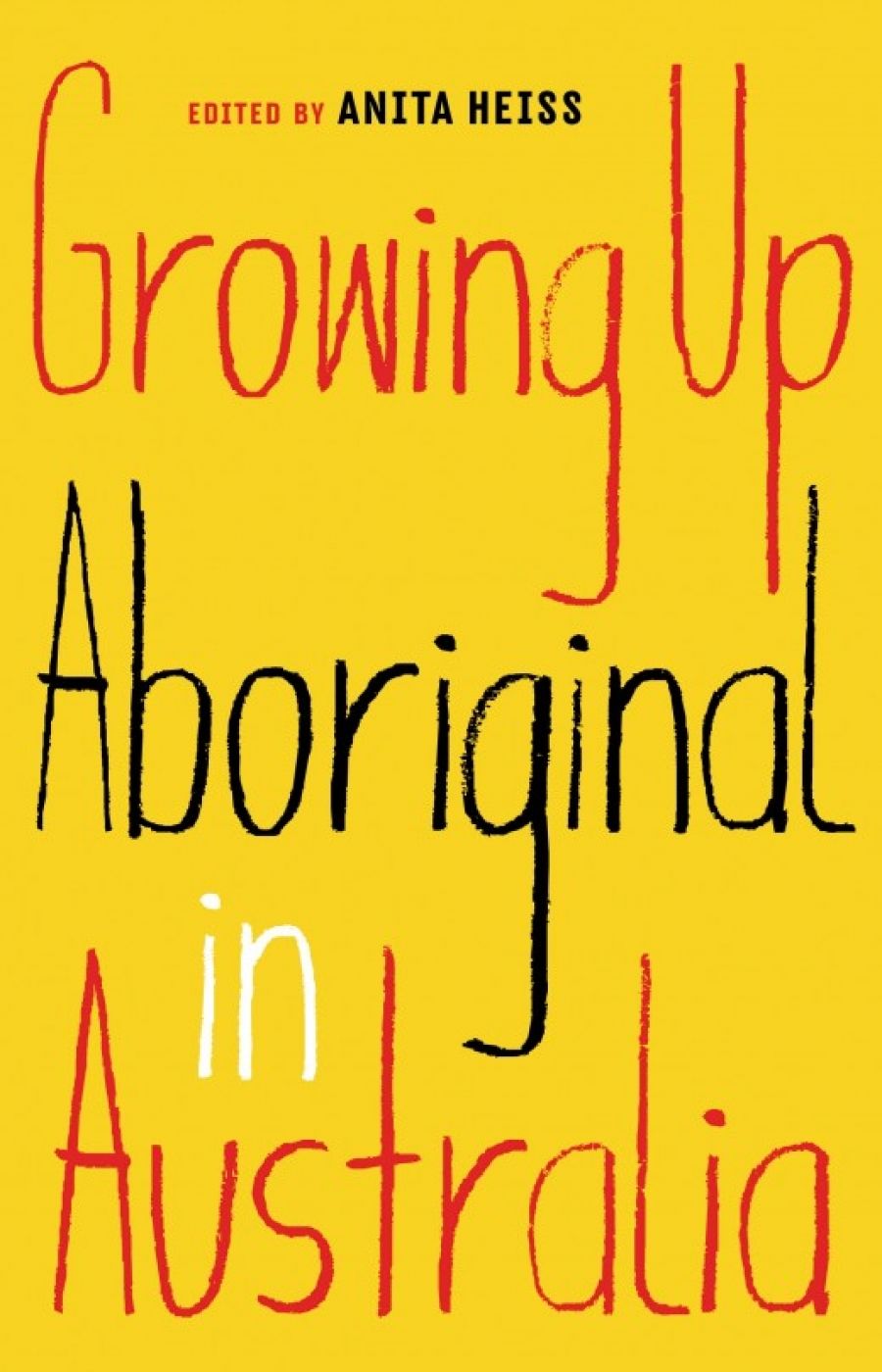
- Free Article: No
- Contents Category: Essay Collection
- Custom Article Title: David Haworth reviews <em>Growing Up Aboriginal In Australia</em> edited by Anita Heiss
- Review Article: Yes
- Online Only: No
- Custom Highlight Text:
The late historian Patrick Wolfe did not pull any punches when he wrote that colonialism seeks to eliminate and replace the Indigenous cultures holding sovereignty over the lands and resources that colonisers wish to claim ...
- Book 1 Title: Growing Up Aboriginal In Australia
- Book 1 Biblio: Black Inc., $29.99 pb, 311 pp, 9781863959810
The contributions are quite brief, ranging from two to ten pages. This enables Heiss to include a large number of contributions; it also encourages many contributors to present a series of snapshots and anecdotes from their lives, often combined with a brief family history, rather than extended narratives.
Heiss is not prescriptive as to how contributors address the theme of growing up Aboriginal in Australia; they are simply required to do it in non-fiction. Many contributors relate childhood experiences of racism and racist violence and the ongoing ramifications of these, but not all define their growing up in this way. Many contributors celebrate experiences of growing up with deep connections to language, culture, and Country; others celebrate the experience of coming to these connections later in life, or talk about the ways these connections are yet to be made. Many describe the experience of growing up in two worlds, or the ways their experiences of racism intersect with other forms of oppression. One recurring response to the theme is the observation that growing up Aboriginal can be an ongoing process that does not necessarily commence or end in childhood; another is the contention that the nation of Australia, as a whole, must ‘grow up Aboriginal’ in order to reckon with the past and present realities of invasion.
 Anita Heiss (photograph by Helen Kassila)
Anita Heiss (photograph by Helen Kassila)
Heiss does not confine her selection to established writers or well-known public figures. The anthology includes plenty of these: writers such as Tony Birch, Ambelin Kwaymullina, and Celeste Liddle, and public figures like composer and singer Deborah Cheetham, football legend Adam Goodes, and actor Miranda Tapsell. Heiss also includes emerging and unpublished writers, and people from a wide variety of professions, ages, and backgrounds: teachers, doctors, lawyers, homemakers, artists, retirees, students, academics, journalists, prisoners, and veterans of Australia’s armed forces.
This diversity means that the anthology not only tells many stories but also moves through a wide range of writing styles, in quick succession. Some pieces are written as lyrical prose poems, some as witty journalistic commentaries; some are written with the staid formality of a high school essay, some in the style of a grandmotherly anecdote or a yarn told at the pub. While there are different levels of literary experience on display, what is more evident is that each contributor has his or her own particular story to tell, often vividly and movingly. Something that unites the contributors is that they all have the ability and opportunity to tell their own story. In light of this, many of them make a point of honouring the memory of those loved ones who are no longer here to tell their stories. The collection as a whole is dedicated to the memory of one of the contributors – poet, teacher, and activist Alice Eather – who took her own life before it was published.
Heiss makes one further editorial decision that seems simple but has a profound effect on the reading experience: the alphabetical order in which the pieces are presented. Since the contributors often write about childhood experiences, and since their ages range from thirteen to seventy-something, the collection not only flits through a variety of styles but also skips back and forth in time. This highlights both the diversity of Aboriginal experiences and the connections between generations. A piece by Zachary Penrith-Puchalski about growing up in the nineties, and having his Aboriginality questioned constantly due to the colour of his skin, is followed alphabetically with one by Carol Pettersen about growing up on a mission in the 1940s and being forbidden to have contact with her beloved older brother because of the difference in their skin colour. This hopscotching between decades shows how racist notions of Aboriginality, defined by the eliminatory logic of skin colour and blood percentages, can reverberate through missions and school playgrounds separated by half a century, but it also shows the strength and resilience, extending across generations, of Aboriginal people living with this logic.
Celebrating both the differences and commonalities of Australian Aboriginal voices and experiences is important, because one way the logic of elimination manifests in contemporary Australia is in the persistent myth that there is only one narrowly defined way to be and look Aboriginal. Many of the pieces explore, in sometimes devastating detail, the impact this myth can have on a single life. Taken together, the diversity exhibited by these fifty pieces shatters that myth. One hopes for a sequel.


Comments powered by CComment